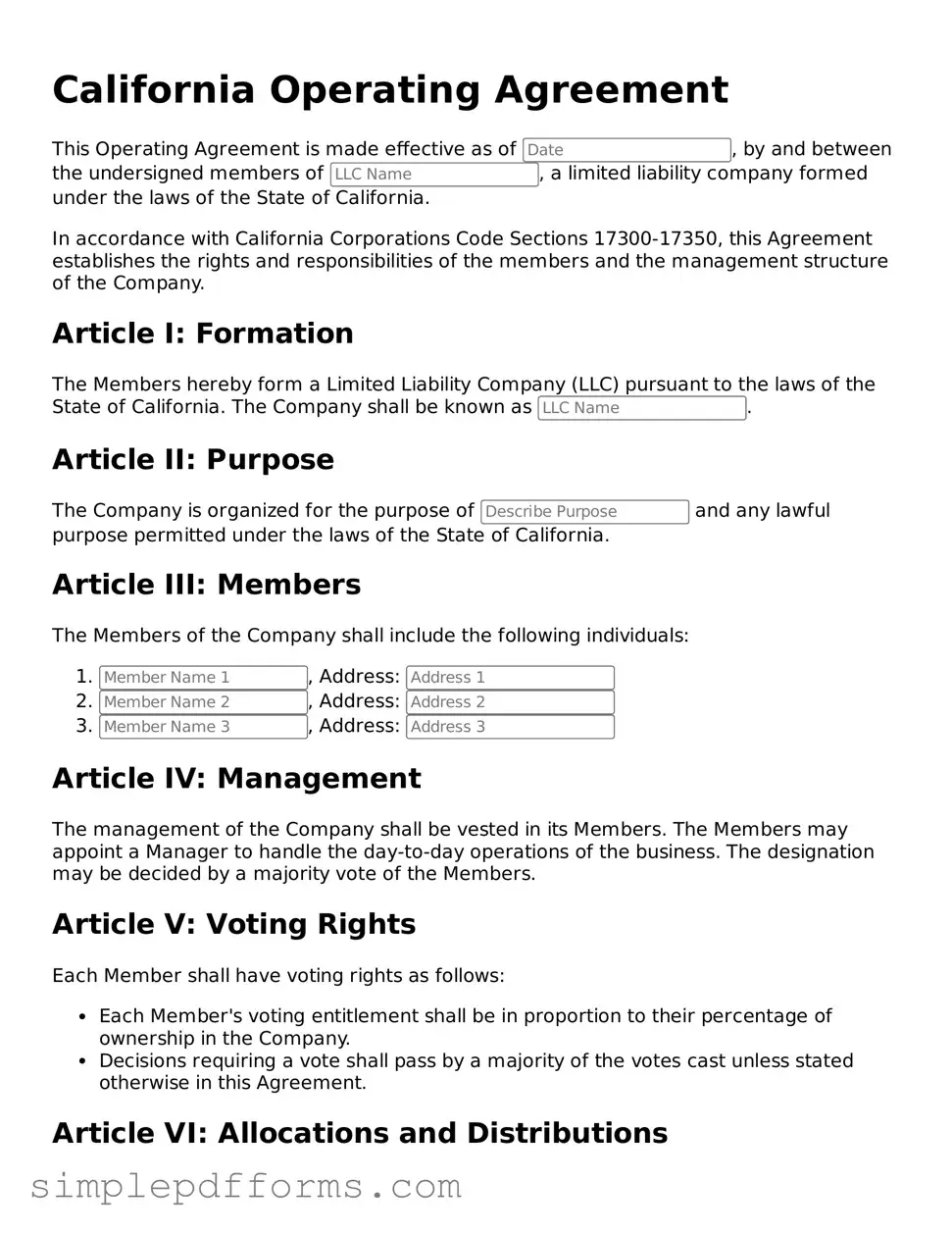Attorney-Verified Operating Agreement Document for California State
The California Operating Agreement form is a crucial document that outlines the management structure and operational procedures of a limited liability company (LLC) in California. This agreement serves as a foundational tool for members to establish their rights, responsibilities, and the distribution of profits and losses. Understanding its components is essential for ensuring compliance and fostering smooth business operations.
Open Operating Agreement Editor Now
